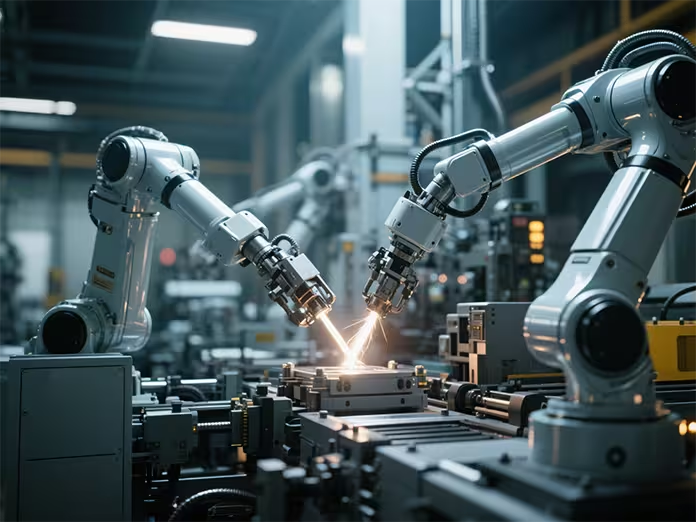
The factory floor of tomorrow is here today, and it’s revolutionizing how the world produces everything from smartphones to automobiles. Manufacturing 4.0, the fourth industrial revolution, is transforming global production through smart technologies, artificial intelligence, and the Industrial Internet of Things (IoT). This paradigm shift promises to unlock unprecedented efficiency, reduce costs, and create entirely new business models that were unimaginable just a decade ago.
What is Manufacturing 4.0?
Manufacturing 4.0 represents the convergence of physical production systems with digital technologies, creating “smart factories” that operate with minimal human intervention. Unlike traditional manufacturing, where machines operate in isolation, Manufacturing 4.0 connects every component of the production process through a vast network of sensors, actuators, and intelligent systems.
At its core, Manufacturing 4.0 integrates cyber-physical systems, IoT devices, cloud computing, and artificial intelligence to create autonomous production environments. These smart factories can self-optimize, predict maintenance needs, and adapt to changing market demands in real-time. The result is a production ecosystem that’s more flexible, efficient, and responsive than ever before.
The Industrial IoT Revolution
Industrial IoT serves as the nervous system of Manufacturing 4.0, connecting machines, products, and people in ways that generate actionable insights. Billions of sensors embedded throughout production facilities collect massive amounts of data about temperature, pressure, vibration, energy consumption, and quality metrics. This data flows seamlessly to cloud-based analytics platforms where machine learning algorithms identify patterns and optimize operations.
Consider a modern automotive assembly line where Manufacturing 4.0 principles are fully implemented. Every robot, conveyor belt, and quality control station communicates through industrial IoT networks. When a defect is detected, the system immediately traces the issue back to its source, adjusts parameters to prevent future occurrences, and alerts maintenance teams before problems escalate. This level of integration was impossible with previous manufacturing approaches.
Transforming Global Production Landscapes
Manufacturing 4.0 is reshaping global production in profound ways. Traditional manufacturing hubs are evolving into intelligent production ecosystems, while emerging markets are leapfrogging older technologies to implement cutting-edge smart factory solutions from the ground up.
One of the most significant impacts is the democratization of manufacturing capabilities. Small and medium-sized enterprises can now access sophisticated production technologies that were previously exclusive to large corporations. Cloud-based Manufacturing 4.0 platforms provide scalable solutions that grow with businesses, enabling startups to compete with established industry giants.
The technology is also enabling “mass customization” on an unprecedented scale. Smart factories can switch between different product configurations without significant downtime, allowing manufacturers to offer personalized products while maintaining the cost advantages of mass production. This capability is particularly valuable in industries like consumer electronics, where product lifecycles are short and customization demands are high.
Real-World Success Stories
Major manufacturers worldwide are already reaping the benefits of Manufacturing 4.0 implementations. Siemens’ Amberg Electronics Plant in Germany produces over 12 million products annually with a defect rate of just 12 parts per million, thanks to comprehensive Industrial IoT integration. The facility operates with minimal human intervention while maintaining exceptional quality standards.
In Asia, companies like Foxconn have invested billions in Manufacturing 4.0 technologies to automate smartphone production. Their smart factories use machine learning to optimize assembly line configurations, reducing production time while improving product quality. These implementations demonstrate how Manufacturing 4.0 can maintain competitiveness in high-volume, low-margin industries.
Overcoming Implementation Challenges
Despite its transformative potential, Manufacturing 4.0 adoption faces significant challenges. Legacy system integration remains a major hurdle, as many manufacturers operate equipment that spans decades. Retrofitting older machinery with IoT sensors and connectivity solutions requires careful planning and substantial investment.
Cybersecurity concerns also loom large as manufacturing systems become increasingly connected. Industrial IoT networks create new attack vectors that require robust security frameworks. Manufacturers must balance connectivity benefits with security risks, implementing comprehensive cybersecurity strategies that protect intellectual property and operational continuity.
Workforce transformation represents another critical challenge. Manufacturing 4.0 doesn’t eliminate human workers but fundamentally changes their roles. Traditional operators become system monitors and problem solvers, requiring new skills in data analysis, system optimization, and collaborative robotics. Companies must invest heavily in retraining programs to ensure their workforce can thrive in smart factory environments.
The Competitive Advantage
Organizations that successfully implement Manufacturing 4.0 gain substantial competitive advantages. Predictive maintenance capabilities reduce unplanned downtime by up to 50%, while real-time quality monitoring minimizes defect rates and waste. Energy optimization through intelligent systems can reduce manufacturing costs by 10-20%, providing significant margin improvements.
More importantly, Manufacturing 4.0 enables new business models that create additional revenue streams. Product-as-a-Service offerings, where manufacturers retain ownership of products while customers pay for usage, become feasible through continuous IoT monitoring. This approach strengthens customer relationships while creating recurring revenue opportunities.
Future Outlook
The evolution toward Manufacturing 4.0 is accelerating, driven by advances in 5G connectivity, edge computing, and artificial intelligence. Next-generation smart factories will feature even greater autonomy, with systems that can reconfigure production lines automatically based on demand forecasts and supply chain disruptions.
Sustainability considerations are also driving Manufacturing 4.0 adoption. Smart factories optimize resource consumption, reduce waste, and enable circular economy principles through better tracking and lifecycle management. As environmental regulations tighten globally, these capabilities become increasingly valuable.
Conclusion
Manufacturing 4.0 represents more than technological evolution—it’s a fundamental reimagining of how products are conceived, designed, and produced. The integration of Industrial IoT, artificial intelligence, and cyber-physical systems creates production environments that are more efficient, flexible, and sustainable than traditional manufacturing approaches.
Companies that embrace Manufacturing 4.0 today position themselves for long-term success in an increasingly competitive global marketplace. While implementation challenges exist, the benefits of smart factory transformation far outweigh the costs. The future belongs to manufacturers who can seamlessly blend physical production with digital intelligence, creating value for customers while optimizing operational performance.
The rise of Manufacturing 4.0 isn’t just changing how we make things—it’s revolutionizing what’s possible in global production, setting the stage for the next chapter of industrial innovation.

































